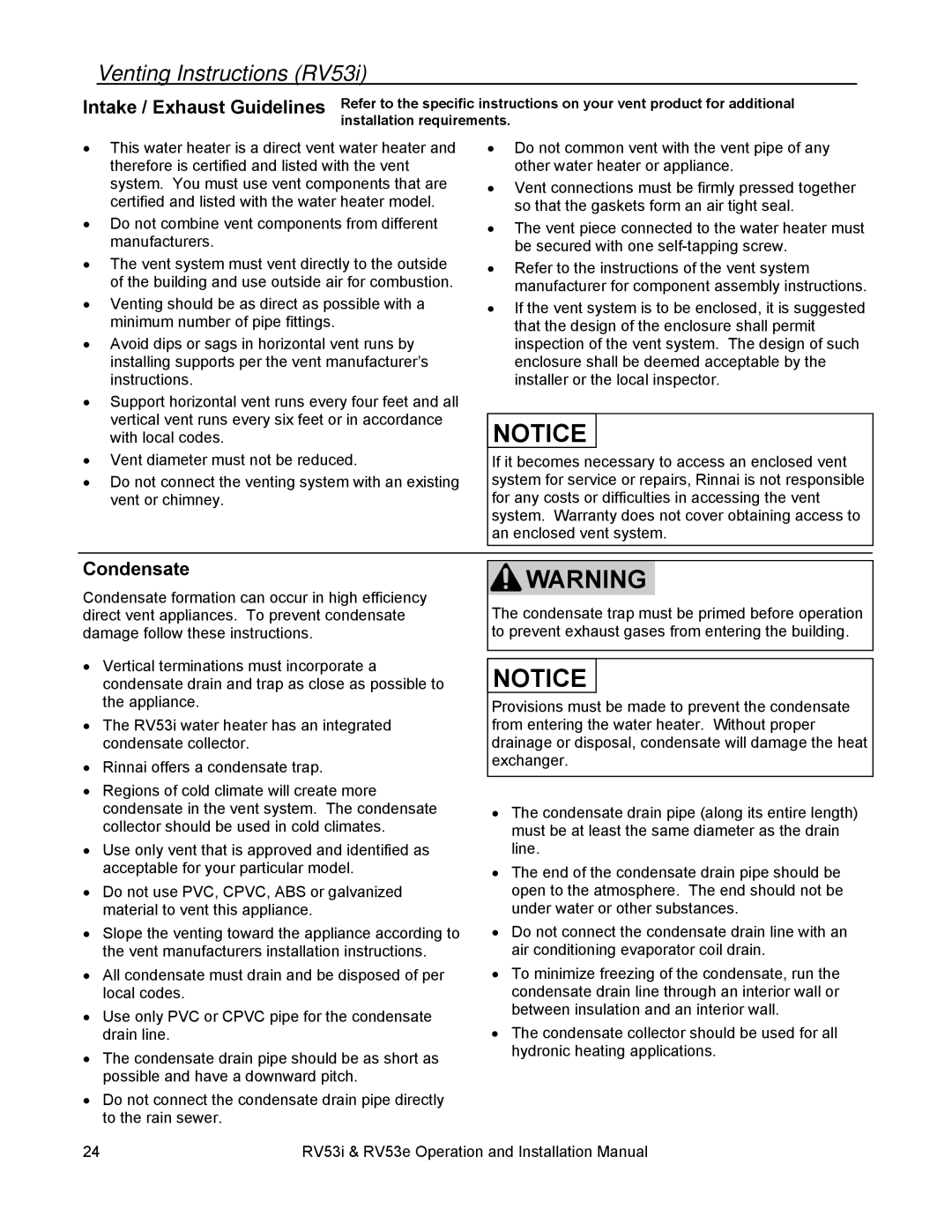
Venting Instructions (RV53i)
Intake / Exhaust Guidelines | Refer to the specific instructions on your vent product for additional |
| installation requirements. |
•This water heater is a direct vent water heater and therefore is certified and listed with the vent system. You must use vent components that are certified and listed with the water heater model.
•Do not combine vent components from different manufacturers.
•The vent system must vent directly to the outside of the building and use outside air for combustion.
•Venting should be as direct as possible with a minimum number of pipe fittings.
•Avoid dips or sags in horizontal vent runs by installing supports per the vent manufacturer’s instructions.
•Support horizontal vent runs every four feet and all vertical vent runs every six feet or in accordance with local codes.
•Vent diameter must not be reduced.
•Do not connect the venting system with an existing vent or chimney.
•Do not common vent with the vent pipe of any other water heater or appliance.
•Vent connections must be firmly pressed together so that the gaskets form an air tight seal.
•The vent piece connected to the water heater must be secured with one
•Refer to the instructions of the vent system manufacturer for component assembly instructions.
•If the vent system is to be enclosed, it is suggested that the design of the enclosure shall permit inspection of the vent system. The design of such enclosure shall be deemed acceptable by the installer or the local inspector.
Condensate
Condensate formation can occur in high efficiency direct vent appliances. To prevent condensate damage follow these instructions.
•Vertical terminations must incorporate a condensate drain and trap as close as possible to the appliance.
•The RV53i water heater has an integrated condensate collector.
•Rinnai offers a condensate trap.
•Regions of cold climate will create more condensate in the vent system. The condensate collector should be used in cold climates.
•Use only vent that is approved and identified as acceptable for your particular model.
•Do not use PVC, CPVC, ABS or galvanized material to vent this appliance.
•Slope the venting toward the appliance according to the vent manufacturers installation instructions.
•All condensate must drain and be disposed of per local codes.
•Use only PVC or CPVC pipe for the condensate drain line.
•The condensate drain pipe should be as short as possible and have a downward pitch.
•Do not connect the condensate drain pipe directly to the rain sewer.
•The condensate drain pipe (along its entire length) must be at least the same diameter as the drain line.
•The end of the condensate drain pipe should be open to the atmosphere. The end should not be under water or other substances.
•Do not connect the condensate drain line with an air conditioning evaporator coil drain.
•To minimize freezing of the condensate, run the condensate drain line through an interior wall or between insulation and an interior wall.
•The condensate collector should be used for all hydronic heating applications.
24 | RV53i & RV53e Operation and Installation Manual |
